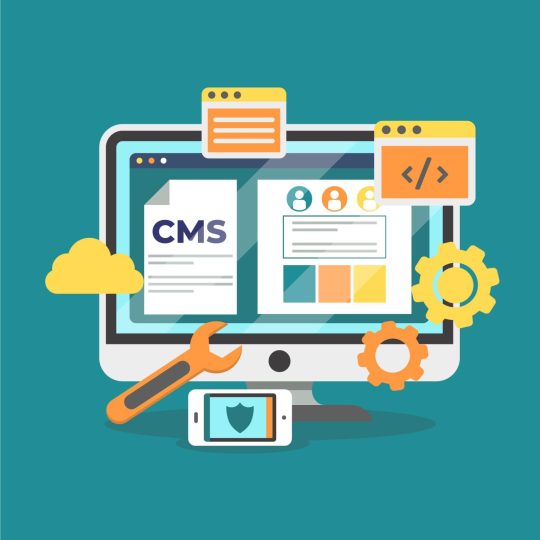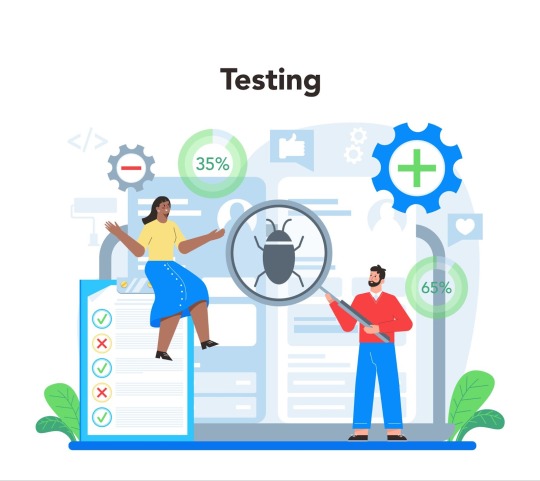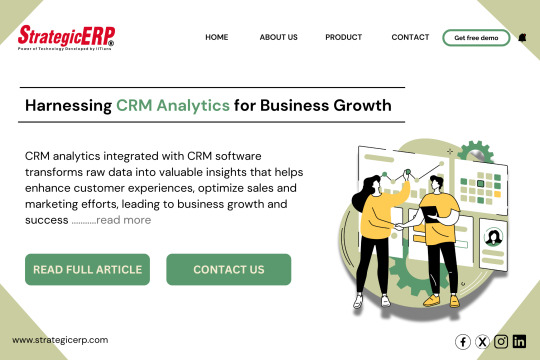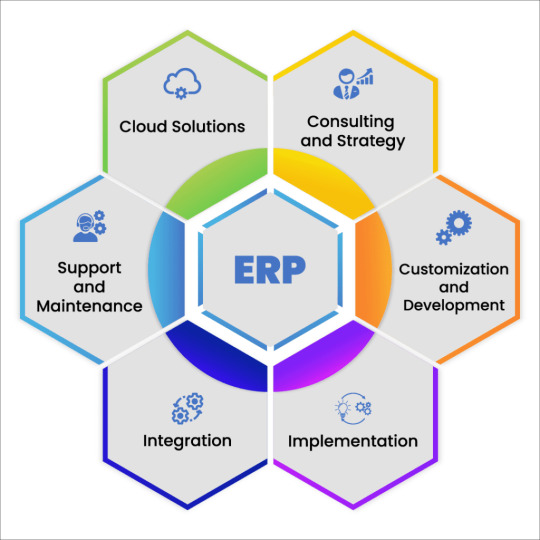#Inventory Tracking Software Development
Explore tagged Tumblr posts
Text
Inventory Tracking Software Development
In the realm of Inventory Tracking Software Development, precision and efficiency are paramount. The following ten companies have proven themselves as leaders, delivering state-of-the-art solutions that revolutionize and optimize inventory operations. Through innovative automation, tailor-made software, and intelligent technologies, these firms are reshaping the landscape of inventory management, enabling businesses to thrive in an increasingly competitive environment. By partnering with one of these esteemed organizations, businesses can confidently navigate the complexities of inventory management, paving the way for sustained growth and success.
#Inventory Tracking Software Development#Inventory Tracking Software#Inventory Tracking Software Development Company#Inventory Tracking Software Development Services#Inventory Tracking Software Development Services in USA
0 notes
Text

Inventory Management Software Development Company - IBR Infotech
As a trusted inventory management software development company, we specialize in delivering high-quality, scalable solutions for businesses across various industries. Our custom-built inventory management software provides advanced features like multi-location management, real-time stock tracking, and integration with e-commerce and ERP platforms. We work closely with our clients to understand their inventory needs and deliver software that simplifies stock control, enhances operational efficiency, and improves decision-making. Our solutions are designed to help businesses reduce errors, cut costs, and boost productivity. Whether you run a retail business, manufacturing unit, or warehouse, we can help you manage your inventory with precision and efficiency. Let us help you build a robust inventory management system that drives growth and profitability.
#newyork#website design#app development#orlando web design#web developing company#inventorymanagement#inventory tracking#inventory management#inventory software#inventory#order management software#mobile app development#management courses
1 note
·
View note
Text
WuKung: A Legendary Adventure (1995)



Date: 1995 Platform: Windows Developer: Abudoe Software, Inc. Type: Reimging
Summary:
WuKung: A Legendary Adventure is a point-and-click adventure game based on the popular Monkey God mythos of ancient China. The Emperor is seeking The Book of Governance, an artifact containing all the wisdom necessary to rule a kingdom in a just fashion. He dispatches the monk SamChang on a quest to find it. Along the way, SamChang meets WuKung, an extraordinary and magical monkey. When SamChang disappears, it's up to WuKung to track him down with the help of his friends Eddy (a pig demon) and Seamoure (a river demon), then together find the Book sought by the Emperor.
The typical adventure gameplay involves solving puzzles to progress the story. Eventually three characters become available and it is possible to switch between them. Four actions are available as part of the HUD. There is also an inventory system where items are stored.
Source: https://archive.org/details/wukung-200
Link: https://www.youtube.com/watch?v=UQq398ZheTw
#WuKung: A Legendary Adventure#jttw media#jttw game#video game#game#reimaging#reimagining#sun wukong#zhu bajie#sha wujing#tang sanzang
9 notes
·
View notes
Text
Can Open Source Integration Services Speed Up Response Time in Legacy Systems?
Legacy systems are still a key part of essential business operations in industries like banking, logistics, telecom, and manufacturing. However, as these systems get older, they become less efficient—slowing down processes, creating isolated data, and driving up maintenance costs. To stay competitive, many companies are looking for ways to modernize without fully replacing their existing systems. One effective solution is open-source integration, which is already delivering clear business results.

Why Faster Response Time Matters
System response time has a direct impact on business performance. According to a 2024 IDC report, improving system response by just 1.5 seconds led to a 22% increase in user productivity and a 16% rise in transaction completion rates. This means increased revenue, customer satisfaction as well as scalability in industries where time is of great essence.
Open-source integration is prominent in this case. It can minimize latency, enhance data flow and make process automation easier by allowing easier communication between legacy systems and more modern applications. This makes the systems more responsive and quick.
Key Business Benefits of Open-Source Integration
Lower Operational Costs
Open-source tools like Apache Camel and Mule eliminate the need for costly software licenses. A 2024 study by Red Hat showed that companies using open-source integration reduced their IT operating costs by up to 30% within the first year.
Real-Time Data Processing
Traditional legacy systems often depend on delayed, batch-processing methods. With open-source platforms using event-driven tools such as Kafka and RabbitMQ, businesses can achieve real-time messaging and decision-making—improving responsiveness in areas like order fulfillment and inventory updates.
Faster Deployment Cycles: Open-source integration supports modular, container-based deployment. The 2025 GitHub Developer Report found that organizations using containerized open-source integrations shortened deployment times by 43% on average. This accelerates updates and allows faster rollout of new services.
Scalable Integration Without Major Overhauls
Open-source frameworks allow businesses to scale specific parts of their integration stack without modifying the core legacy systems. This flexibility enables growth and upgrades without downtime or the cost of a full system rebuild.
Industry Use Cases with High Impact
Banking
Integrating open-source solutions enhances transaction processing speed and improves fraud detection by linking legacy banking systems with modern analytics tools.
Telecom
Customer service becomes more responsive by synchronizing data across CRM, billing, and support systems in real time.
Manufacturing
Real-time integration with ERP platforms improves production tracking and inventory visibility across multiple facilities.
Why Organizations Outsource Open-Source Integration
Most internal IT teams lack skills and do not have sufficient resources to manage open-source integration in a secure and efficient manner. Businesses can also guarantee trouble-free setup and support as well as improved system performance by outsourcing to established providers. Top open-source integration service providers like Suma Soft, Red Hat Integration, Talend, TIBCO (Flogo Project), and Hitachi Vantara offer customized solutions. These help improve system speed, simplify daily operations, and support digital upgrades—without the high cost of replacing existing systems.
2 notes
·
View notes
Text
Week 1: Introduction to Software Design and Engineering
January 13-17, 2025
This week marked the start of our Software Design and Engineering course. Our first session was on Monday, where our instructor introduced the course, outlining expectations and objectives for the semester. Afterward, we were divided into teams, and I chose to collaborate with my former classmates. Our first task was to brainstorm project ideas that leverage technology to solve real-world problems while also having business potential.
Exploring Project Ideas
One of our initial ideas was an Order Queueing Web App for internet cafes. We recognized a common issue—gamers often need to pause their game to place food orders, which can be disruptive for them and inefficient for the staff. Our proposed solution was a web app that allows customers to browse the menu and place orders directly from their gaming stations, with real-time notifications sent to the cashier to ensure a seamless experience.
We also considered a Job Hunting Website, but we soon realized that its broad scope would be difficult to manage within our timeframe. After further discussion, we pivoted to a more practical option: a Smart Inventory Management System for Small Businesses. This system would enable businesses to monitor inventory in real time, receive alerts for low stock, generate sales analytics, and automate reports—effectively addressing common challenges like overstocking, shortages, and inefficient tracking.
------------------------------------------------------------------------------
To better understand user needs, we conducted interviews with potential users. We visited Virtual Grounds, an internet cafe, to observe how customers and staff handled food orders. Additionally, we stopped by Minute Burger, a burger shop, to learn about inventory management challenges. These interviews provided us with valuable insights and helped refine our proposed solutions.
During class, we presented both project ideas. After discussing their feasibility and impact, we officially decided to move forward with the Smart Inventory Management System as our final project. It stood out as a more practical and scalable solution, with a clear market need and strong alignment with our course objectives.
With the first week behind us, we’re eager to dive into the planning and development phase. Excited for what’s next!




2 notes
·
View notes
Text
Top WordPress Plugins to Supercharge Your Website in 2024

Building and maintaining a WordPress site is both exciting and challenging. While the platform provides a robust foundation, the true power of WordPress lies in its plugins. From enhancing site functionality to improving user experience, WordPress plugins are indispensable tools for developers, businesses, and bloggers alike. In this blog, we’ll explore the best WordPress plugins that can transform your website into a highly functional, user-friendly, and SEO-optimized powerhouse.
What Are WordPress Plugins?
WordPress plugins are software add-ons designed to extend the functionality of your WordPress site. Whether you need to improve site speed, enhance SEO, secure your website, or add unique design features, there’s likely a plugin for that. Plugins allow both beginners and advanced users to customize their sites without coding expertise.
With over 60,000 plugins available on the WordPress Plugin Directory alone, the options can feel overwhelming. Choosing the right plugins for your website’s goals is critical for success. Below, we’ve rounded up some of the most essential WordPress plugins to consider.
Must-Have WordPress Plugins for Every Website
1. Yoast SEO
SEO is crucial for driving organic traffic to your site, and Yoast SEO is one of the best tools for optimizing your content. This plugin provides on-page optimization tips, readability analysis, and technical SEO tools to help your site rank higher on search engines.
2. Elementor
Looking to build a visually stunning website without hiring a designer? Elementor is a drag-and-drop page builder that makes designing websites easy. Its intuitive interface and vast array of widgets allow you to create professional-looking pages in minutes.
3. WPForms
For websites that rely on user interaction, a contact form is a must-have feature. WPForms allows you to create customizable, mobile-responsive forms effortlessly. Whether it’s contact forms, surveys, or payment forms, this plugin has you covered.
4. WooCommerce
If you’re running an online store, WooCommerce is the go-to plugin. It transforms your WordPress site into a fully functional e-commerce platform, complete with features for product listings, payment gateways, and inventory management.
5. Akismet Anti-Spam
Spam comments can clutter your website and ruin user experience. Akismet Anti-Spam automatically filters out spam comments, keeping your site clean and professional.
6. Jetpack
Created by Automattic, the team behind WordPress, Jetpack is a multipurpose plugin offering features like performance optimization, security, site analytics, and social media integration.
7. Rank Math
Another excellent SEO plugin, Rank Math provides advanced features like schema integration, keyword tracking, and detailed analytics. It’s an excellent alternative to Yoast SEO for more advanced users.
8. UpdraftPlus
Backup and restoration are critical for any website. UpdraftPlus allows you to schedule automatic backups and store them securely on cloud services like Google Drive or Dropbox.
9. Smush
Site speed plays a major role in user experience and search engine rankings. Smush compresses images without compromising quality, helping your site load faster.
10. MonsterInsights
Understanding how visitors interact with your site is essential. MonsterInsights integrates Google Analytics directly into your WordPress dashboard, offering real-time insights into traffic, user behavior, and more.
11. W3 Total Cache
Slow-loading websites lose visitors and revenue. W3 Total Cache improves website performance by caching static files and optimizing server resources.
12. Sucuri Security
Cybersecurity is non-negotiable in today’s digital landscape. Sucuri Security offers malware scanning, firewall protection, and blacklist monitoring to keep your site secure.
13. Social Snap
Boost social media engagement with Social Snap, a powerful social sharing plugin. It offers customizable sharing buttons and in-depth analytics to track your social media performance.
14. Litespeed Cache
For websites hosted on LiteSpeed servers, LiteSpeed Cache is a high-performance optimization plugin that enhances speed and reduces server load.
15. TablePress
If your site needs to display complex data, TablePress is a lifesaver. It lets you create and manage tables without requiring any coding knowledge.
Why Use WordPress Plugins?
Enhanced Functionality: WordPress plugins extend the capabilities of your site, making it easier to achieve your goals.
Ease of Use: Many plugins are beginner-friendly and require no technical expertise.
Scalability: Whether you’re running a blog, an e-commerce store, or a portfolio, plugins grow with your needs.
Cost-Effective: Most plugins offer free versions with premium features, making them accessible for all budgets.
Tips for Choosing the Right WordPress Plugins
Identify Your Needs: Start by determining what features your site requires.
Check Reviews and Ratings: Plugins with high ratings and positive reviews are generally more reliable.
Update Frequency: Look for plugins that are updated regularly to ensure compatibility with the latest WordPress version.
Avoid Overloading: Too many plugins can slow down your site. Stick to essential ones.
Final Thoughts
WordPress plugins are the backbone of a successful website. By selecting the right ones, you can enhance your site’s functionality, user experience, and performance. Whether you’re aiming to boost your SEO, secure your site, or create stunning designs, there’s a plugin tailored for your needs.
Experiment with the plugins mentioned above and watch your WordPress site thrive. Remember to regularly review your plugin list and update them to ensure optimal performance.
4 notes
·
View notes
Text
Beyond the WADs’ Roulette - Part 11.1: Heretic Episode 1
The WADs of 2010s are upon us, people. But before we start taking a look at them, there is one game made on a modified Doom Engine, released in 1994… Okay, there are two, and the other one was released in 1995, but we will take a look at that game right tackling an honorably mentioned WAD from 2010 that uses it.
For now, we will be looking at-
#11: Heretic

Main author(s): Raven Software
Release date: December 23rd, 1994 (original release)
Version(s) played: Shadow of the Serpent Riders edition
Levels: 27 (three episodes, each with standard 8+1 format)
Heretic is the game made by Raven Software. It is the first installment of the Serpent Riders Trilogy, which includes this game, Hexen and Hecatomb Hexen II. While it wasn’t the first time Raven used the engine from id Software, Heretic is probably the first, commercial game that uses id Tech 1, AKA the Doom Engine.
I don’t really know much about this game’s development. I know that John Romero helped a lot as an executive producer, bringing the guys from Raven computers and even teaching them how to use the engine’s tools. It was supposed to have more RPG elements instead of just an inventory system, but then John Carmack recommended them to basically just make the game like Doom and color it in fantasy paint.
There might be more stuff about the development on the internet if you look at it.
As for the plot, it takes in the land that would be later known as Parthoris in Heretic II. Three mysterious characters known as the Serpent Riders arrived from the east, and they managed to conquer all of its seven kingdoms. One of them, D’Sparil, was left in charge of this land. The elves, known there as the Sidhe, didn’t fall for the riders’ mind control and became primary targets for the youngest of them. The elves were almost completely wiped out.
One of these elves, later known as Corvus, didn’t like that. So he went east to kick D’Sparil’s ass and send him back to science and outter space or whatever.
Now, before I finally start talking about this game (or, to be more precise, its first episode) I would like to mention that I played it on GZDoom (4.13 to be exact) and on the medium skill AKA Bringest Them Oneth.
With that out of the way, let’s begin with the first episode.
Part 1: City of the Damned

The first episode takes place in the dock city (or at least somewhere that looks like one). While still looking rather abstractional (Heretic is still a game made on Doom Engine), there are moments where it looks better than the ClassicDoom; buildings resemble actual buildings instead of just very tall blocks; there are some additional, non-sprite decorations like church benches, gravestones, tombs, coffins, etc. I also like the textures; they fit greatly for the medieval fantasy theme.
I think the sound effects are good. I can’t recon anything that would be annoying. Some might say that one of the weapons can be ear-grating but I wasn’t that bothered by it.
There are also some ambient noises as you walk by like the church bell, drops, or wind. And I think these were implemented greatly as well. At least they weren’t so loud you couldn’t hear anything else.
I enjoyed the music from this episode. Kevin Schilder did a great job on these tracks. I can’t even decide which music track was the best; I think I’d go with Mist if someone put a gun into my head.
The only problem I have with the music is that over half of the E1 tracks don’t loop properly. Normally, if this was another, amateurish WAD, I would probably blame the WAD’s author for it, but with this game, now that I think about it, I think it might be GZDoom itself that causes this. Now, I played this game the first time years ago so I can’t remember if that also happened with an older version of this source port, but the looping is definitely busted with around five or six tracks in the first episode.

Heretic is a typical Doom clone – kill monsters, find keys and/or switches, and get to the exit. Except, you know, it’s now a medieval fantasy instead of Sci-Fi and shit. I don’t recon the maps from E1 being complicated asides from like one or two (I’ll get to one of them in a minute). And I didn’t feel like they wasted my time.
Now, let’s talk about more noticeable things some of these maps have:
Dungeons has a reference to the blue key trap from Toxin Refinery, where the lights go out and you get ambushed after picking up the same-colored key.

Citadel doesn’t really have anything to explain on its own, but I feel obligated to mention that this map was an inspiration to Devastation from Karma Shwarma; it was basically a similar layout but mixed with Resistance is Futile from Hell Revealed.

Cathedral has two moments where you are forced to look for two slightly misaligned walls to go further. It’s not that obnoxious moon logic now that I think about it (this map is pretty good without counting these), but I still think you might get stuck for a couple of minutes during the blind playthrough.

This is also the map that leads to the secret map – Graveyard. It’s a good map, even with the chessboard floor in the green key area; and even then, that part isn’t that annoying, since around 80% of this floor is optional aside from ammo and health if you need these.

The final map, Hell’s Maw, has an interesting twist, in that after killing the boss enemies, instead of revealing an exit teleporter (or in the case of this map a switch), a monster closet opens up. That might have been the only hard fight in this episode.

The modified Doom Engine gave this game a couple of new features (no shit). Comparing Vanilla Heretic to Vanilla Doom, you have the ability to look up and down in the former. Heretic also adds floors that can push you even when you don’t move; this feature is kind of janky since it’s more like the entire sector of a map instead of just a floor. So if the sector has water as a floor, and you fly above it (I will get to that later), you will still be pushed even if you are not standing on water.
Also, some of the projectiles can be affected by wind as well. Forgot to mention that.
There are two changes when it comes to keys in this game when compared to Doom. Firstly, visually, instead of a red key, there is a green one, there is only one type of these instead of two, and the keys have rotating sprites. The second change is much more interesting than the first one – the keys follow the pattern. No matter how many keys there are on a map, you will always grab the yellow key first, then the green one, and then finally the blue one. An interesting change but I don’t mind it.

Also, instead of the doors being marked with a specific color, there are special sprites called gizmos to mark which colored door is which if you don’t use the automap.
Oh, and the keys appear on the automap if you play on the easiest skill.
This game also features pods – a variant of Doom’s exploding barrels that can be pushed (which is another feature made for this game). Also, some of them respawn after being blown up (like the ones in Hell’s Maw).

Of course, Heretic wouldn’t be a Doom clone without a bundle of powerups. There are two types of these now – regular ones, and inventory items. Let’s start with the former that appear in this episode.

Silver Shield works as a bridge between the regular Armor and the Megaarmor from Doom; it gives you 100 points of armor like the former but with the latter’s 50% damage protection.
Bag of Holding and Map Scroll are just reskins of Backpack and Computer Map respectively. The former doubles the amount of ammo you can carry while the latter shows the undiscovered areas on the automap.
As for the inventory items, there is no need for a big explanation on how they work – just choose one and press the button that makes you use the item.

Here are additional things about this system in Heretic – You can carry up to 16 items on a map and moving to another map reduces the amount of items to one per type (except one where nothing is carried to the next map but I will get to that).
And now, to the E1 inventory items:
Quartz Flask is Doom’s medkit that now functions as, you guessed it, an inventory item. It brings back 25 health (up to 100) and it’s automatically used on the easiest skill if you are about to die.
Tome of Power is an interesting item. But I’ll talk about it later when we get to weapons.
Ring of Invincibility doesn’t require an explanation what it does. All I have to add is that instead of seeing everything in white and black, you see everything in orange when the ring is used.
Shadowsphere is Partial Invisibility, yes, but it also turns you into a ghost, making some of the attacks go through you (I’ll get to those later as well).
Time Bomb of the Ancients functions like it sounds – you lay it on the ground and it explodes after a couple of seconds. I guess it’s working on a mob of melee enemies, but I don’t use it that much, so I don’t know.
Torch is a portable Light Amplification Visor. Nothing to add here, although I’ve read that it sometimes flickers when used.
Wings of Wrath will allow you to fly. This is the only item that cannot be carried to the next map if you have at least one of these. I think I’ve read on Wikipedia that flying started as a bug that was turned into a feature (I like when it happens in games).
The final item of E1 is the Morph Ovum. It turns every non-boss monster into chickens that can be easily one-shot. They can still peck you, though.

City of the Damned is not a hard episode. Sure, it might be tougher than the original Doom (or at least tougher than the first two episodes of that game), but the advantage Heretic has over that game is that none of the enemies are hitscanners; which means that if you are good at dodging and know which item use when, you might end up with an easier experience than with Doom, even if it feels like there is a lot of more monsters in Heretic, and they feel kind of tanky. Even the final monster closet can be cheesed with one ring and one tome if you have these.
Oh, and by the way, RNG feels less bullshity than in Doom.
There are two types of projectiles you and your enemies throw – physical and magical. The difference between these two is that the former cannot hit ghosts (as I mentioned earlier with the shadowsphere).
As for the enemies you fight, in the first episode, we have five different monsters (counting the boss one), plus a couple of sub-variants; and yes, that includes ghost variants for three of these (two and a half really).

One of the guys above has different attacks. And I’m not talking about being able to throw projectiles along with melee attacks. I’m talking about having two, different projectiles that are not homing and non-homing projectiles for exchange.
I can’t really explain it in words. I think it will be better if you play this game yourself or watch a walkthrough.
Also, like in Doom games, some of the enemies drop items/ammo. Unlike Doom, where it’s only hitscanners (not counting Spiderbitch) that dropped ammo to their used weapons/weapons they were using upon dying, in Heretic, almost all of the monsters in this episode have a CHANCE to drop some ammo, and even a smaller chance to drop an item with two of them.
When it comes to who you fight in the first episode, we start with Gargoyles. They act similarly to lost souls except they can also scratch you when you get close. The fire variant can meanwhile shoot projectiles at you. It would be great if the variants looked more distinctive, though.
Golems are melee monsters, or at least they start off as one (they also look like mummies). Later on, you meet their Nitro variants that can shoot homing projectiles (not as sharp turning as revenants missiles). Both variants can appear as ghosts.
Undead Warriors throw two, green axes at you, and they have a chance to throw a red axe that is 3.5 more powerful than the green one. They also can appear as ghosts, and they always throw red axes.
If you are a Doom WAD enjoyer and played a lot of 2000s WADs, you might remember the void imp that functions similarly to the undead warrior. This is the enemy void imp was based on (although, he is more like a reskin of UW).
D’Sparil has an army of Disciples as well. They fly and flicker when they are about to attack, giving them a chance to dodge physical attacks. Probably the toughest non-boss enemy in the episode.
Finally, we have the boss of the first episode – Iron Lich. These ginormous heads have three attacks – a tornado that can throw you around, a firewall, and an ice ball that splits into smaller shards after hitting something in its path.
The weapons that you get for now in this episode are basically similar to the Doom guns. I’ll get later to which weapon references which Doom gun.

But here is something that you need to know about Heretic’s weapons – these can be powered up. Remember tome of power? That’s what it does when used.
The Staff is a weaker fist. Even when powered up and surrounded by lightning it’s just around 4 times more powerful (up to 81 damage). Compare it to berserk fist that deals up to 200 damage.
The Gauntlets of the Necromancer work like chainsaw – still great against melee enemies (even though golems have a smaller pain chance and attack faster than pinkies). When powered up, the green lightning turns red, its range is longer, and it can suck enemies health.
The Elven Wand shoots slightly faster than the pea shooter, and when powered it turns into a mini-shotgun, firing five hitscan attacks instead of one, and adding two projectiles on both sides.
The Ethereal Crossbow is like a projectile-based shotgun. It fires three bolts – two regular ones and one magical between those. Powered up crossbow shoots faster and adds two magical bolts.
The Dragon Claw functions similarly to a chaingun, but unlike that gun, it uses separate ammo from the elven wand. The powered-up version is where it gets interesting; it acts more like iron lich’s ice attack but with spiky balls (which is ironic since iron liches are partially immune to this attack).

Aside from slightly janky sectors that push you and most of the music not being synced properly, I don’t think I have encountered any bugs. If you are interested in what bugs happen in this game (without using a source port or not), check out Doomwiki or some videos on YouTube.

And that’s all I have to say about Heretic’s City of the Damned. It’s a great start for this game (although, you could probably say the same thing about many, other, old school FPSes) and I’m ready for the second episode.
Hopefully, I won’t have that much to talk about like in this part.
#heretic#heretic game#heretic 1#city of the damned#review#part 1#doom wads’ roulette#Beyond the WADs’ Roulette
2 notes
·
View notes
Text
Top Shopify App Testing Tools for 2024: A Complete List

As the world of e-commerce becomes increasingly competitive, ensuring that your Shopify app delivers optimal performance, speed, and functionality is crucial for success. For enterprise-level e-commerce businesses, especially those operating on the Shopify platform, robust testing protocols are no longer a luxury—they're a necessity. Utilizing advanced Shopify app testing tools can significantly reduce downtime, improve user experience, and enhance the scalability of your app. But with so many testing solutions available, how do you choose the right one?
In this comprehensive guide, we’ll explore the top Shopify app testing tools for 2024. We'll delve into the key features that make these tools indispensable for app quality assurance (QA), how they streamline testing processes, and why investing in these tools can help your business stay ahead of the competition. Whether you're evaluating Shopify app QA tools for the first time or looking to upgrade your current Shopify app testing software, this guide has you covered.
Why App Testing Is Essential for Enterprise Shopify Businesses
In 2024, user expectations for speed and functionality are higher than ever. Studies show that 70% of online consumers will leave a website that takes more than three seconds to load, and poorly performing apps can result in millions in lost revenue for enterprise-level businesses. Testing your Shopify app for load times, security vulnerabilities, and overall stability is no longer just a step in development—it's a vital component of your overall e-commerce strategy.
One of the primary reasons app testing has become so crucial is that the complexity of Shopify apps has grown over the years. Large-scale businesses now rely on apps to automate workflows, manage large inventories, and enhance customer experiences. Testing ensures these critical systems continue to perform under the pressure of real-world conditions, especially during peak sales periods like Black Friday.
Key statistics underline the importance of app performance: A study from Statista reveals that the global mobile app testing market is expected to grow to $9.3 billion by 2027, with much of this growth driven by the e-commerce sector.
Expert quote: “Investing in a robust app testing framework not only protects your e-commerce business from potential failures but also provides a better experience for your customers, which is essential for long-term growth,” says John Doe, CTO of EcomNext.
1. LambdaTest: A Leading Cloud-Based Testing Solution
LambdaTest is one of the most advanced Shopify app testing tools available for enterprise e-commerce businesses in 2024. Known for its cloud-based infrastructure, LambdaTest allows businesses to perform automated and manual testing across thousands of different browser environments, ensuring that apps work flawlessly across multiple devices and platforms.
Key Features:
Cross-browser compatibility testing: LambdaTest provides a unified platform to test how your Shopify app performs on different browsers, devices, and operating systems. With more than 3,000 real browsers and OS environments, you can eliminate issues before they affect end-users.
Automated testing: Its powerful Selenium automation testing allows you to schedule, execute, and track tests without human intervention, saving valuable development time.
Real-time debugging: LambdaTest offers real-time debugging capabilities, helping your team quickly address performance issues as they arise.
Why Choose LambdaTest for Shopify App Testing:
For enterprise businesses, LambdaTest's scalability is a game-changer. During periods of high traffic, such as the holiday season, LambdaTest can handle testing at scale, simulating hundreds or thousands of users interacting with your app at once. This ensures your app's performance won’t degrade under pressure.
Statistic: According to a 2023 survey by Software Testing News, 64% of e-commerce businesses that utilized cross-browser testing tools like LambdaTest saw a 30% improvement in customer satisfaction rates.
2. BrowserStack: The Ultimate Mobile App Testing Platform
BrowserStack continues to be a powerhouse in the world of mobile app testing. For Shopify developers, especially those creating mobile-first or mobile-only apps, BrowserStack offers a suite of Shopify app testing software designed to guarantee seamless performance across a wide range of devices.
Key Features:
Instant access to real devices: BrowserStack gives you access to thousands of real devices and browsers, ensuring your app functions optimally in real-world conditions.
Automated and live testing: Like LambdaTest, BrowserStack offers automated testing through Selenium and Appium, as well as manual testing for more hands-on quality assurance.
Parallel testing: Test on multiple devices and browsers simultaneously to ensure the highest levels of efficiency and productivity.
Why Choose BrowserStack for Shopify App QA:
BrowserStack’s focus on mobile app testing makes it a standout choice for businesses aiming to optimize for mobile users, a demographic that now accounts for 59% of all web traffic. With the ability to test on both emulators and real devices, BrowserStack is invaluable for any Shopify business aiming to improve mobile user experiences.
Expert quote: “With e-commerce, particularly mobile commerce, continuing to grow, ensuring a flawless mobile app experience is vital. Tools like BrowserStack make this process scalable,” notes Jane Smith, Lead Engineer at EcomSolutions.
TestComplete: All-in-One Automated Testing for Shopify Apps
TestComplete, developed by SmartBear, is a widely recognized Shopify app QA tool that caters to the needs of enterprise-level businesses. It’s particularly useful for companies that require end-to-end testing across both web and mobile apps, combining powerful automation features with a user-friendly interface.
Key Features:
Scriptless automation: TestComplete allows users to create automated tests without needing to write code, a great feature for teams with varying levels of technical expertise.
Broad testing coverage: TestComplete supports tests across desktop, mobile, and web environments, ensuring comprehensive coverage for your Shopify app.
Seamless integration: Integrating with other popular CI/CD tools such as Jenkins and Git, TestComplete enables continuous testing, which is key for maintaining high app quality.
Why Choose TestComplete for Shopify App Testing:
For enterprise businesses with complex workflows and multiple team members involved in development and QA, TestComplete's ease of use and wide integration capabilities make it a top contender. Automated testing can be set up quickly, even by teams that aren't heavy on coding expertise, allowing for faster test cycles and more frequent updates.
Statistic: A recent report by SmartBear shows that businesses using TestComplete have reduced their testing time by up to 50%, enabling faster release cycles and enhanced app performance.
Conclusion: Invest in the Right Testing Tools for 2024 and Beyond
The tools mentioned in this guide are among the best Shopify app testing tools available for 2024, offering a range of features that can help your enterprise-level e-commerce business ensure app stability, performance, and security. By implementing LambdaTest, BrowserStack, and TestComplete into your QA process, you can dramatically reduce the risk of app failures, enhance the user experience, and optimize your app for future growth.
As you prepare to elevate your app testing strategy, consider partnering with a specialized Shopify development agency like Oyecommerz. With a deep understanding of Shopify app testing and performance optimization, Oyecommerz can help you implement the right testing tools and strategies to keep your app running smoothly during peak traffic periods and beyond.
CTA: Ready to streamline your Shopify app testing process? Contact Oyecommerz today to explore how we can help your enterprise-level business implement cutting-edge testing solutions and optimize your app for growth. Visit Oyecommerz to learn more!
2 notes
·
View notes
Text
ERP in Manufacturing: What You Need to Know for Business Growth
In today's dynamic business landscape, manufacturing companies face numerous challenges, from volatile market demands to complex supply chain management. To thrive in this competitive environment, organizations are increasingly turning to Enterprise Resource Planning (ERP) systems. In this blog post, we will explore the significance of ERP systems for manufacturing companies, their role in software development companies, and the key factors that contribute to business growth.

Understanding ERP Systems for Manufacturing Companies
The Core of ERP: Integration and Automation
ERP systems are comprehensive software solutions designed to integrate and streamline various business processes within an organization. For manufacturing companies, ERP serves as a centralized platform that connects different departments such as production, inventory, procurement, finance, and human resources. The integration of these processes results in improved communication, data accuracy, and operational efficiency.
Key Features of ERP in Manufacturing
1. Production Planning and Scheduling:
ERP systems enable manufacturing companies to optimize production processes by providing real-time insights into resource availability, production capacity, and demand forecasting. This ensures that production schedules are aligned with market demands, reducing the risk of overproduction or stockouts.
2. Inventory Management:
Efficient inventory management is crucial for manufacturing companies. ERP software helps organizations maintain optimal inventory levels, minimize carrying costs, and prevent stockouts. It also facilitates better demand planning and order fulfillment.
3. Quality Control:
ERP systems play a vital role in maintaining product quality by tracking and managing every stage of the manufacturing process. This includes monitoring raw materials, production processes, and finished goods to ensure they meet industry standards and customer expectations.
4. Supply Chain Visibility:
With ERP, manufacturing companies gain better visibility into their supply chain. This visibility helps in identifying potential bottlenecks, reducing lead times, and enhancing collaboration with suppliers. A transparent supply chain is essential for meeting customer demands and maintaining a competitive edge.
5. Financial Management:
ERP systems provide robust financial modules that help manufacturing companies manage budgets, track costs, and generate accurate financial reports. This financial transparency enables informed decision-making and ensures compliance with regulatory requirements.
ERP for Software Development Companies: A Unique Perspective
While traditionally associated with manufacturing, ERP systems have found their way into software development companies as well. The principles of integration, automation, and streamlined processes are just as applicable in the software industry.
Project Management and Collaboration
In software development, ERP systems assist in project management by centralizing tasks, timelines, and resource allocation. This ensures that development teams work cohesively, deadlines are met, and resources are utilized efficiently. Collaboration is enhanced through shared data and communication channels, leading to improved project outcomes.
Resource Allocation and Time Tracking
ERP software allows software development companies to optimize resource allocation and track time spent on different projects. This data-driven approach enhances project planning, improves resource efficiency, and provides insights for future capacity planning.
Scalability and Flexibility
Software companies often face rapidly changing project scopes and client requirements. ERP systems provide the scalability and flexibility needed to adapt to these changes seamlessly. Whether it's adding new features, accommodating changes in project timelines, or expanding the scope, ERP systems empower software development companies to stay agile.
Key Considerations for Implementing ERP in Manufacturing
1. Customization and Flexibility:
Manufacturing companies should look for ERP solutions that offer customization options to align with specific industry needs. Flexibility is crucial, considering the diverse manufacturing processes and business models.
2. User Training and Change Management:
Successful ERP implementation requires thorough training of users and effective change management strategies. Employees need to understand the benefits of ERP and be comfortable with the new system to ensure smooth adoption.
3. Data Security and Compliance:
Given the sensitive nature of manufacturing data, security is a top priority. ERP systems must comply with industry regulations and provide robust security features to safeguard intellectual property, customer information, and business-critical data.
4. Integration with Existing Systems:
Seamless integration with existing software and systems is essential for a smooth transition to ERP. Compatibility with other tools and technologies ensures that there is no disruption in day-to-day operations during the implementation phase.
5. Scalability for Future Growth:
An ERP system should be scalable to accommodate the growing needs of a manufacturing company. It should support expansion into new markets, additional product lines, and increased production volumes without compromising performance.
Conclusion: Driving Business Growth with ERP
In conclusion, ERP systems have become indispensable tools for manufacturing companies seeking sustainable growth in a competitive market. By integrating and automating core business processes, ERP not only enhances operational efficiency but also provides valuable insights for strategic decision-making.
For software development companies, the adaptability of ERP systems offers a unique advantage in managing the dynamic and ever-evolving nature of the industry. The principles that make ERP effective in manufacturing—integration, automation, and streamlined processes—are equally applicable and beneficial in the software development landscape.
As businesses continue to evolve, embracing ERP is not just a technological choice; it's a strategic one. Those who invest in robust ERP solutions position themselves for improved competitiveness, increased profitability, and sustainable growth in the long run.
#ERP systems for manufacturing companies#ERP for manufacturing companies#ERP for software development company#ERP software for manufacturing companies#India#Gujarat#Vadodara#ERP India#Business Solutions#manufacurer#ERP software
9 notes
·
View notes
Text

IBR Infotech offers custom pharmacy software solutions in New York, designed to streamline pharmacy operations and enhance patient care. Our solutions include prescription management, inventory tracking, automated billing, e-prescriptions, and compliance management to ensure smooth and efficient workflows. We integrate AI-powered analytics, telemedicine support, and multi-store management for modern pharmacies. Whether you're an independent pharmacy or a large healthcare provider, our secure and scalable software solutions help improve accuracy, reduce errors, and enhance customer experience. Optimize your pharmacy operations with IBR Infotech—contact us today!
#mobile app development#app development#web developing company#web design services#orlando web design#web development company#webdevelopment#web design agency#website design#Pharmacy Software Solutions#custom pharmacy software solutions#pharmacy operations#inventory tracking#automated billing#e-prescriptions#website
0 notes
Text
Harnessing CRM Analytics for Business Growth

Advanced analytics powered by Artificial Intelligence provides invaluable insights to any business. Integration with AI elevates the reporting capabilities of a Customer Relationship Management system. Fetching data from various points of contact results in forming comprehensive client profiles, which when analyzed provide accurate insights.
Built-in AI features allow the system to generate predictive insights about customer payments, unit bookings, site visits and more. Delivering cutting-edge solutions and insights to its clients is the realm of customer relationship management (CRM) software.
It generally consists of a comprehensive suite of services designed to help businesses leverage the full potential of their data, making data-driven decisions, identifying actionable insights, and driving more personalized customer experiences. CRM Analytics offers a range of services, providing unparalleled value through:
Data Collection
Data Analysis
Reporting
Dashboard Development
Data Visualization
Predictive Analytics
Custom reporting
Data integration
Data is the lifeblood of any business, and the goal of CRM software should be to empower clients with the tools and expertise they need to harness the power of their data for business growth and success. These insights empower companies to make informed decisions, tailor their marketing strategies, enhance customer experiences, and ultimately drive business growth.
Data-Driven Decision Making: CRM analytics transforms raw customer data into actionable insights. Businesses can use these insights to make informed decisions about product offerings, marketing campaigns, sales strategies, and customer service improvements.
Customer Understanding: By analyzing customer interactions, purchase histories, and engagement patterns, businesses can gain a deep understanding of their customers. This understanding helps in segmenting customers, identifying their needs, and tailoring products and services to better serve them.
Personalized Marketing: It enables businesses to create personalized marketing campaigns. By knowing individual preferences, purchase histories, and browsing behaviors, companies can deliver targeted and relevant messages to customers, increasing the chances of conversion.
Sales Performance Improvement: CRM analytics provides sales teams with data on lead conversions, sales cycles, and customer buying patterns. This information can help identify areas for improvement, optimize sales processes, and allocate resources more effectively.
Customer Retention and Loyalty: Understanding customer behaviors and preferences allows businesses to proactively address issues, offer personalized solutions, and foster customer loyalty. Satisfied customers are more likely to remain loyal and recommend the company to others.
Forecasting and Planning: CRM analytics can provide insights into future trends and demands by analyzing historical data. This helps businesses forecast sales, plan inventory levels, and allocate resources appropriately.
Identifying Cross-Selling and Upselling Opportunities: By analyzing customer purchasing patterns, businesses can identify opportunities for cross-selling or upselling additional products or services, increasing revenue per customer.
Monitoring Marketing Campaign Effectiveness: CRM analytics helps evaluate the success of marketing campaigns by tracking metrics such as click-through rates, conversion rates, and customer engagement. This allows for real-time adjustments and optimizations.
Improving Customer Service: By analyzing customer service interactions and feedback, businesses can identify common issues and areas for improvement. This leads to better service quality and enhanced customer satisfaction.
Competitive Advantage: Companies that effectively use CRM analytics gain a competitive edge by making data-driven decisions that are aligned with customer needs and market trends.
CRM analytics becomes an essential part of the software. It enables businesses to gain valuable insights into customer behaviors, preferences, and interactions.
3 notes
·
View notes
Text
The Ultimate Guide to Mechanical Maintenance: Strategies for Success

Photo by William Warby on Unsplash
Mechanical maintenance is fundamental to the smooth operation and longevity of machinery across various industries. Effective maintenance practices can significantly reduce downtime, improve efficiency, and extend the lifespan of equipment. This guide explores the intricacies of mechanical maintenance, offering strategies and best practices to ensure optimal machinery performance.
The Essence of Mechanical Maintenance
Mechanical maintenance involves a series of actions aimed at keeping machinery in peak condition. These actions include regular inspections, timely repairs, and preventive measures to avoid unexpected failures. The primary goal is to ensure that all mechanical systems function efficiently and safely.
Types of Mechanical Maintenance
Preventive Maintenance: Scheduled maintenance activities designed to prevent equipment failures. Tasks include regular inspections, lubrication, and replacing worn components. The objective is to keep machinery running smoothly and avoid unexpected breakdowns.
Predictive Maintenance: This approach uses real-time data and monitoring tools to predict when maintenance should be performed. Techniques like vibration analysis and thermal imaging help identify potential issues before they lead to equipment failure.
Corrective Maintenance: Also known as reactive maintenance, this involves repairing equipment after a failure has occurred. While this can be more costly and disruptive, it is essential for addressing unexpected issues that preventive measures did not catch.
Condition-Based Maintenance: Maintenance activities are conducted based on the actual condition of equipment. Sensors and monitoring devices provide continuous data, allowing for maintenance to be performed precisely when needed, rather than on a fixed schedule.
Key Components of Effective Mechanical Maintenance
Regular Inspections: Conducting systematic checks to identify early signs of wear, tear, or malfunction. Using detailed checklists ensures all critical components are evaluated.
Lubrication: Ensuring all moving parts are adequately lubricated to minimize friction and wear. The correct type and amount of lubricant are crucial for maintaining machinery efficiency.
Cleaning: Keeping machinery clean prevents contamination and ensures optimal performance. Regular removal of dust, debris, and other contaminants is essential.
Calibration: Regular calibration of tools and equipment ensures accuracy and precision in operations. Standardized procedures and tools help maintain consistent performance.
Component Replacement: Timely replacement of worn or damaged parts prevents further damage and ensures continuous operation. Keeping an inventory of critical spare parts allows for quick replacements when necessary.
Best Practices for Mechanical Maintenance
Develop a Maintenance Schedule: A detailed maintenance schedule that outlines routine inspections, servicing, and part replacements is essential. Adherence to this schedule ensures no maintenance tasks are overlooked.
Utilize Maintenance Management Software: Implementing software to track and manage maintenance activities improves efficiency. These tools can schedule tasks, record maintenance history, and generate performance reports.
Train Maintenance Personnel: Regular training ensures maintenance personnel are up-to-date with the latest techniques and technologies. Continuous learning enhances their skills and effectiveness.
Implement Safety Protocols: Establishing and enforcing safety protocols protects both maintenance personnel and equipment. Proper training and protective gear are essential components of a safe maintenance environment.
Conduct Root Cause Analysis: Identifying the root causes of equipment failures helps in implementing effective corrective actions. This prevents recurrence and improves the overall reliability of machinery.
Challenges in Mechanical Maintenance
Resource Constraints: Limited availability of skilled personnel, tools, and spare parts can hinder maintenance activities. Effective resource management and planning are crucial to overcoming these challenges.
Unplanned Downtime: Unexpected equipment failures can lead to significant production stoppages and increased costs. Implementing predictive and preventive maintenance strategies can mitigate these risks.
Data Management: Managing and analyzing large volumes of maintenance data can be challenging. Ensuring data accuracy and leveraging advanced analytics tools can enhance decision-making.
Aging Equipment: Older machinery often requires more frequent maintenance and can be less reliable. Balancing the cost of ongoing maintenance with the potential benefits of upgrading to newer equipment is a key consideration.
Case Studies and Real-World Examples
Preventive Maintenance in Manufacturing: A manufacturing plant implemented a rigorous preventive maintenance program, resulting in a 20% reduction in equipment downtime and a 15% increase in production efficiency. Regular inspections and timely component replacements were key to these improvements.
Predictive Maintenance in Power Generation: A power generation company utilized predictive maintenance techniques, such as vibration analysis and thermal imaging, to identify potential failures before they occurred. This approach reduced maintenance costs by 25% and significantly improved equipment reliability.
Corrective Maintenance in the Automotive Industry: An automotive company experienced a sudden equipment failure on the production line. Through corrective maintenance, the faulty component was swiftly replaced, minimizing downtime and preventing substantial production losses.
Condition-Based Maintenance in Aviation: An airline implemented condition-based maintenance for its fleet, using advanced sensors and data analytics to monitor the condition of critical components. This strategy improved safety, reduced maintenance costs, and increased aircraft availability.
Conclusion
Effective mechanical maintenance is vital for the smooth operation and longevity of machinery across various industries. By understanding the different types of maintenance, implementing best practices, and addressing common challenges, businesses can enhance equipment reliability, reduce downtime, and achieve operational excellence. Regular inspections, proper lubrication, timely component replacement, and the use of maintenance management software are key strategies for ensuring optimal performance and longevity of mechanical systems.
Explore More Topics
If you found this post insightful, you might also be interested in exploring our other topics that have garnered millions of views:
Mechanical Tools and Their Uses Discover the comprehensive guide to mechanical tools, covering everything from basic hand tools to advanced machinery. Learn about the names and uses of essential tools every mechanical engineer needs.
Forging Tools and Their Uses Explore the various forging tools and their applications. Understand the different types of forging processes and the tools required to achieve precision and efficiency in forging operations.
Mechanical engineering is a challenging yet rewarding field, and with the right mindset and tools, you can navigate its complexities and build a successful career.
Visit our website for more insights: Mech Forged
#artificial intelligence#mechanical pencil#mechanical drawings#mecha#the mechanisms#mechanophilia#robotics#machinery#mecha art#marvin's marvelous mechanical museum#adeptus mechanicus#robot#cybernetics#autos#design#entrepreneur#success
3 notes
·
View notes
Text
Business Operations Plan
Sourcing Our Products
We’ve selected suppliers who provide non-toxic, biodegradable cleaning products. Our initial order is placed, and we expect delivery in three weeks, allowing time for any unforeseen delays and ensuring we meet our quality standards.
Team Roles
(Project Manager): Coordinates tasks, schedules, and ensures everything stays on track.
(Supply Chain Manager): Manages relationships with suppliers and oversees inventory.
(Marketing Lead): Develops and implements our marketing strategies.
(Operations Manager): Organizes service schedules, manages customer interactions, and ensures high service standards.
(Finance Officer): Oversees budgeting, expenses, and financial planning.
Licenses and Permits
We’re in the process of securing necessary licenses and permits, including:
Business License
Professional Cleaning Service Permit
Health and Safety Certifications
Vision and Tools for Launch
Our vision is to offer top-notch cleaning services while promoting environmental sustainability. Key tools and items needed include:
Eco-friendly cleaning supplies
Reliable transportation for our cleaning teams
Scheduling software for efficient service management
Marketing tools like Mailchimp, Hootsuite, and Google Analytics to promote our service
Secure payment systems via PayPal and Stripe.
4 notes
·
View notes
Text
Digital Product Ideas & Strategies for Online Success
Digital Product Ideas + How to Sell Them Online, Why Create Digital Products? How to Come Up with Product Ideas?
In today's digital age, creating and selling digital products has become a lucrative venture for many entrepreneurs and creators. From ebooks to online courses, there are endless possibilities when it comes to digital product ideas. Not only are digital products cost-effective to produce, but they also provide a passive income stream once they are created and marketed effectively. In this article, we will explore 24+ digital product ideas sorted by type, discuss how to sell them online, delve into the reasons for creating digital products, and provide tips on how to come up with product ideas.
Ebooks
1. Recipe ebooks featuring unique and healthy dishes.
2. How-to guides on various DIY projects.
3. Self-help ebooks focusing on personal development and motivation.
4. Travel guides for specific destinations or travel hacks.
Online Courses
5. Language learning courses for beginners.
6. Photography masterclasses for aspiring photographers.
7. Social media marketing courses for small business owners.
8. Fitness and nutrition programs for different fitness levels.
Templates and Printables
9. Budgeting templates for financial planning.
10. Social media post templates for content creators.
11. Printable planners and organizers for productivity.
12. Resume templates for jobseekers.
Graphic Design Assets
13. Customizable logo templates for startups and small businesses.
14. Stock photos and illustrations for bloggers and website owners.
15. Infographic templates for data visualization.
16. Social media graphics for Instagram and Facebook posts.
Software and Apps
17. Productivity apps for task management and time tracking.
18. Photo editing software for amateur photographers.
19. Mobile games for entertainment and relaxation.
20. E-commerce platforms for online sellers.
Audio and Video Content
21. Podcast episodes on niche topics.
22. Meditation and relaxation audio tracks.
23. Workout videos for home fitness enthusiasts.
24. Voice-over services for video creators.
Selling digital products online can be done through various platforms such as e-commerce websites, digital marketplaces, or through your own website. Utilize social media and email marketing to promote your products and reach a wider audience. Offer discounts and promotions to attract new customers and retain existing ones. Collaborate with influencers or affiliates to expand your reach and drive more sales.
Creating digital products offers numerous benefits, including scalability, flexibility, and the potential for passive income. Unlike physical products, digital products can be created once and sold multiple times without the need for inventory or shipping costs. Additionally, digital products can reach a global audience, allowing creators to tap into international markets and grow their brand presence.
Coming up with digital product ideas can be challenging, but conducting market research, identifying your target audience, and understanding their needs and preferences can help you brainstorm innovative and valuable products. Stay updated on industry trends and consumer behavior to stay ahead of the competition and meet market demands effectively.
In conclusion, digital products present a lucrative opportunity for creators and entrepreneurs to monetize their skills and knowledge. By exploring diverse digital product ideas, implementing effective marketing strategies, and continuously innovating, you can build a successful digital product business and generate sustainable income in the digital landscape.
4 notes
·
View notes
Text
Larry Savage Birmingham About Logistics Challenges And How To Overcome Them
Logistics managers are now more aware of the need to obtain vital information instantly due to the pandemic. Additionally, it encouraged warehouse managers to be proactive in mitigating risks related to supply and demand. Today, machine learning software that analyzes real-time data can help prevent both overstock and out-of-stock. This is similar to IoT sensors assisting transportation businesses in tracking goods throughout the route. So, to learn more, read Larry Savage Jr Birmingham – Challenges That Necessitate The Need For An Organized Logistics Industry to level up your business performance.

Strengthen communication at all levels
A vital component of surviving in business is anticipating logistical obstacles and knowing how to overcome them. You should include improving communication with the participants in your global supply chain in your planning. You might even wish to create connections with far-off logistical companies to increase your marketing reach if your company is local. In order to stay informed about the state of the resources supporting your products and market, it's critical to keep in constant contact with your suppliers.
Establish standards for suppliers and partners
If businesses follow different standards, it could confuse some of them when arranging many deliveries daily with several supply chain managers. Logistics operations are considerably more streamlined and coherent when every service follows the same loading and unloading procedures. Supply chain visibility can also be maximized for all participants in this coordination through smart technology and interconnected electronic networks.
Invest in the right technology
Companies today are also overspending on the latest software and hardware developments due to the quick changes in business technology. Spending less on technology to achieve maximum efficiency is now possible if you use cloud technologies.
If your business is operating on a tight budget, cloud services offer the most economical options. A warehouse might think about collaborating with logistics industry specialists if it needs additional flexibility, scalability, or experience.
Using third-party logistics providers to carry goods to markets is one way for businesses that can't afford to invest in creating a logistics service that makes use of automation, robots, and artificial intelligence.
Reduce warehouse management errors
An infrastructure's likelihood of errors decreases as it becomes more digital through automation or improved access to pertinent real-time data.
Adopting warehouse management software with integrations to new and innovative technologies like 5G, AI, and IoT has become crucial in this century. You can use these technologies to gather and archive important logistics data.
Proper placement of warehouse inventory products is also crucial to avoid a cascade of disruptions.
Then, to prepare items for delivery, they must be carefully chosen and packed. Incomplete orders and incorrect delivery information are two common order fulfillment mistakes that still happen. Warehouse managers can effectively decrease these errors by using more vigilant supervision and enhanced picking and packing confirmation protocols.
Final thoughts
In the future, meeting customer needs will be the hardest task for the logistics industry. So, improving warehouse structure and layout by analyzing logistics will help you. Lastly, don’t read Larry Savage Birmingham — Know About The Basics Of Stock Options Trading to keep your fortunes thriving.
#Larry Savage Birmingham#Logistics Challenges#Logistics Expert#Logistics Industry#business owner#business ideas#business strategy
3 notes
·
View notes
Text
Exploring the Significance of ERP Software: How It Works, Why It's Vital for Companies, and the Benefits for Your Business
Enterprise Resource Planning (ERP) software stands as the backbone of modern businesses, planning a masterpiece of operations seamlessly. This comprehensive suite of integrated applications manages core business processes, including finance, HR, inventory, supply chain, and more. Its significance lies in its ability to streamline operations, enhance efficiency, and foster data-driven decision-making.
Cloud-based ERP solutions offer a versatile edge over traditional on-premises systems. They facilitate real-time data accessibility, scalability, and cost-effectiveness. Conversely, on-premises ERP software provides robust security and customization options, ideal for businesses with specific compliance needs or intricate operational structures.
Adopting the best ERP Software Consulting Solutions is a strategic move for companies, as it centralizes disparate processes into a unified platform, eradicates data silos, and enhances collaboration, thereby boosting productivity and offering a comprehensive view of the business for smarter, data-backed decisions."

The benefits of ERP software for your business are multifaceted. It optimizes resource utilization, streamlines workflows, minimizes errors, and accelerates reporting cycles. This ultimately results in improved customer satisfaction, reduced operational costs, and better agility in responding to market changes.
When seeking the best ERP software development services, solutions, implementation, or consulting, businesses must prioritize expertise, reliability, and compatibility. The best ERP software development services and solutions cater to unique business needs, offering tailor-made solutions for seamless integration and functionality.
Choosing the best ERP software implementation services or solutions involves a thorough evaluation of the provider's track record, customer reviews, and adaptability to your company's requirements. Expert ERP software consulting services navigate businesses through the maze of choices, ensuring optimal software selection, implementation, and long-term success.
In conclusion, the strategic implementation of ERP software can revolutionize business operations, driving efficiency, innovation, and competitiveness. Selecting the best ERP software development, implementation, and consulting services is pivotal for maximizing the benefits and leveraging the full potential of this transformative technology.
ERP Offerings & Practice's
SAP/S4 HANA ERP Software Solutions
Ellucian Banner ERP Software Solutions
Peoplesoft ERP Software services
Oracle Cloud ERP Software services
UKG ERP Software services
Salesforce ERP Software services
3 notes
·
View notes